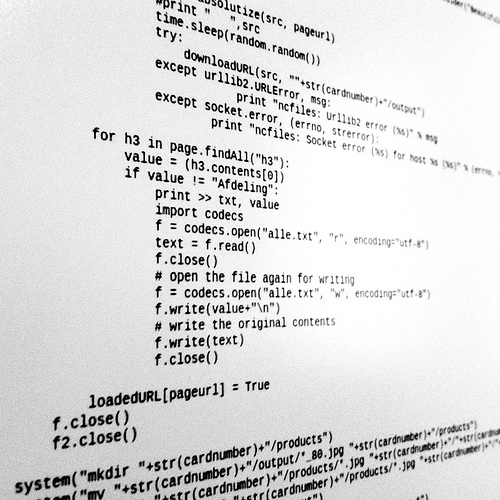 NEWS
NEWS
 NEWS
NEWS
 NEWS
NEWS
![]() As the name Graphics Processing Unit (GPU) suggests, GPU processors are designed for image and video processing on computers–but they’re also optimized for extremely fast, highly parallel computation making them useful for lots of different tasks. For example, a method that mimics the human brain by using the GPU is currently being developed by Google and Salesforce GPUs to analyze of information flowing through Twitter feeds. Not quite graphics processing anymore. As a result, researchers have sought to make this capability more accessible for general development.
As the name Graphics Processing Unit (GPU) suggests, GPU processors are designed for image and video processing on computers–but they’re also optimized for extremely fast, highly parallel computation making them useful for lots of different tasks. For example, a method that mimics the human brain by using the GPU is currently being developed by Google and Salesforce GPUs to analyze of information flowing through Twitter feeds. Not quite graphics processing anymore. As a result, researchers have sought to make this capability more accessible for general development.
A computer science doctoral candidate from Indiana University has come up new programming language that is specifically designed to simplify the development of applications that run on GPUs. Erik Holk, also a researcher at Indiana University, introduced Harlan programming language that promises to support domain specific language for programming on these processors.
In ordinary circumstances, the GPU is used to handle multiple threads at once. Those threads run one by one, but a software program can be designed to make multiple GPUs work in parallel, breaking up a task to run faster than just a sequential processor–much like a supercomputer. Researchers are increasingly researching advanced computing to run more parallel computing out using just GPUs.
“The evolution of GPU hardware architecture has gone from a specific single core, fixed function hardware pipeline implementation made solely for graphics, to a set of highly parallel and programmable cores for more general purpose computation. The trend in GPU technology has no doubt been to keep adding more programmability and parallelism to a GPU core architecture that is ever evolving towards a general purpose more CPU-like core,” according to a paper on the history of GPU architecture by Chris McClanahan of Georgia Tech University.
Harlan could potentially generate better GPU code, although the code that actually runs may not have as much resemblance to what the programmer wrote. The Harlan language serves primarily as a testbed for implementation and optimization techniques of GPU architecture. The language is intentionally small and uncomplicated in order to simplify the process of exploring new analyses and optimizations.
Harlan’s programming syntax is based on Scheme, a dialect of the influential programming language LISP. Originally developed in 1958. Lisp is the ultimate example of programmers bending towards making things easiest for compilers.
Harlan is largely developed to tap the potential of modern graphics processors. Harlan tries to make the task easier and more productive with the use of OpenCL or CUDA. The language itself compiles to OpenCL so that it can then be used by AMD’s Accelerated Parallel Processing SDK, NVIDIA’s CUDA Toolkit or Intel’s OpenCL SDK.
Holk has also used some features of functional programming languages such as interpreter for lambda functions and the support of higher-order procedures.
“GPU programming still requires the programmer to manage a lot of low-level details that often distract them from the core of what they’re trying to do,” says Holk. “We wanted a system that could manage these details for the programmer, letting them be more productive and still getting good performance from the GPU.”
Some other key advantages of Harlan are it can be compiled to OpenCL and can be used to like higher-level languages, Python and Ruby. Harlan runs on Mac OS X 10.6, Mac OS X 10.7, Mac OS X 10.8 and various flavors of Linux.
The language is still research quality, but it has the potential to make GPU computing faster by handling complicated low-level tasks. Harlan source code is available on GitHub under a BSD-style license.
THANK YOU